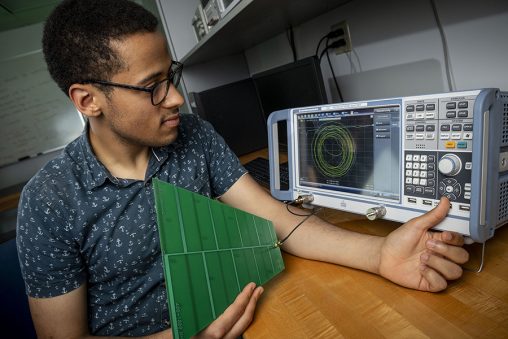 Getting students on the right track in math
Getting students on the right track in math
While math may be one of the core foundations of engineering and computer science, it is a subject that doesn’t always come easily to new students as they enter the College of Engineering and Computer Science.
Thanks to the Academic Advantage Program, a pre-math college boot camp, students can explore their right level of mathematics so they can begin a successful college career.
“It helps the students reach their strides early,” said Darryl Ahner, Ph.D., dean of the College of Engineering and Computer Science. “There is nothing more frustrating than being put into too low of a level of a math class where you’re bored or too high of a level of a math class where you can never catch up.”
Students in the Academic Advantage Program arrive on campus two weeks prior to the start of classes. This gives them the opportunity to explore campus, meet some of their peers, and develop a sense of belonging.
Inside the classroom, students will see math in action through real-world engineering and computer science examples. By improving their math placement level, acquiring the skills they need for their college courses and connecting with professors and classmates, students are set on a path to succeed.
“After the program, I felt 100 percent ready to take my first-year courses,” said biomedical engineering major Noah Scott. “Not only did it help with my math skills, but it also helped me get to know the professors who are teaching different engineering courses. And I was able to get a little bit of the college experience before classes started.”
The Academic Advantage Program is sponsored by the AES Ohio Foundation, Huntington Ingalls Industries, and Leidos.
New programs help support the region’s workforce pipeline
As a university named after Wilbur and Orville Wright — two brothers from Dayton who took the first powered flight and forever changed the world — it only seems fitting that a new option for aerospace education would take wing at Wright State.
While the university already offers a master’s degree in aerospace engineering, students now have the option of pursuing a minor in the field.
“We thought it was important to have an additional minor to go along with our strong mechanical engineering program,” Ahner explained.
With the new minor, students can hone their skills and expertise in the fast-growing aerospace field as they’re working toward their mechanical engineering degree. The program is particularly timely with the rise of advanced air mobility.
Also new in the college is the Bachelor of Science in Engineering Technology. The program was developed as a pathway for students with an associate degree in engineering technology to go on to complete a four-year bachelor’s degree.
“Manufacturing is taking off in this area of Ohio, which creates the need for more graduates on the manufacturing side of engineering,” said Ahner.
Digital engineering and technology transformation initiative prepares future workforce
A forklift is no longer just a forklift. The traditional image of a manually operated machine used to move items from one place to another is quickly becoming outdated.
Today’s forklifts have evolved into highly sophisticated, technologically advanced tools connected to a range of systems. Many forklifts are now autonomous, programmed to navigate and transport multiple items within large warehouses. They’ve become vital components of the modern supply chain, efficiently fulfilling orders and moving vast quantities of products and raw materials.
These new forklifts are the result of collaboration across various fields — software developers, engineers, product managers, and supervisors all play a role in their design and operation.
The modern-day forklift is the perfect example of digital engineering and technology in action.
Digital engineering and technology refer to the use of digital tools, methods, and models to design, develop, and manage engineering systems and products throughout their lifecycles. It integrates various digital technologies — such as simulation, modeling, data analytics, computer-aided design, artificial intelligence, and machine learning — to create virtual representations (digital twins) of physical systems, enabling engineers to test, analyze, and optimize designs before physical prototypes are built.
The main goals of digital engineering and technology are to enhance efficiency and accuracy, reduce costs and time, improve collaboration, and support lifecycle management.
Nearly every engineer and computer scientist will work with digital engineering and technology. With this in mind, the College of Engineering and Computer Science has embarked on a digital engineering and technology transformation initiative.
Key investment areas include launching an endowed digital engineering and technology scholarship fund, creating innovative and collaborative learning spaces that integrate digital tools, and establishing an endowed chair for digital engineering and technology.
“The digital engineering and technology transformation initiative supports what it means to be an engineer and computer scientist in the 21st century,” explained Ahner, who remains committed to producing graduates for the workforce pipelines of Wright-Patterson Air Force Base, defense contractors, and non-defense companies in the region.
“We are recruiting more. We are graduating more,” said Ahner. “Engineers and computer scientists are in huge demand right now. We’re looking forward to continuing to grow that enrollment and providing the engineers and computer scientists of tomorrow.”
This article was originally published in the 2025 issue of the Wright State Magazine. Read more stories at wright.edu/magazine.

 Wright State Police Department delivers major donation to Raider Food Pantry
Wright State Police Department delivers major donation to Raider Food Pantry  Wright State engineering and computer science students earn prestigious federal SMART Scholarships
Wright State engineering and computer science students earn prestigious federal SMART Scholarships  Wright State Police Chief Kurt Holden selected for prestigious FBI National Academy program
Wright State Police Chief Kurt Holden selected for prestigious FBI National Academy program  Wright State’s Raj Soin College of Business ranked among the best for entrepreneurs by Princeton Review
Wright State’s Raj Soin College of Business ranked among the best for entrepreneurs by Princeton Review  Wright State’s annual Raidersgiving draws hundreds
Wright State’s annual Raidersgiving draws hundreds 